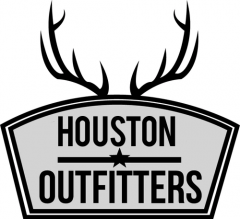Technique Fast and Efficient for Deer Hunters
Field dressing skills are as important as shooting prowess in deer hunting. Handling the deer well results in better venison, beautiful trophies, and safe hunters.
Hunters can prepare for field dressing deer by carrying the recommended equipment and reviewing best practices.
Tools for Field Dressing Deer
According to the Ohio Department of Natural Resources Division of Wildlife pamphlet, “Field Dressing Your Deer,” the following tools are suggested.
- Sharp knife
- Rubber gloves or disposable gloves
- Plastic bag for saving heart and liver for eating
- String for attaching temporary tag and tying intestines
Best Hunting Knives
In his September 2008 Field & Stream article, “Field Dressed to Kill,” Keith McCafferty recommends a knife with a 3 to 4-inch blade and an oval handle with finger grooves and a textured, rubbery finish. Large, fancy knives look impressive, but the most important features for field dressing are sharpness and control.
Cutting Open the Deer
The first step is to affix the hunter’s tag onto the deer. Then, while wearing the rubber gloves, the hunter should roll the deer onto its back and cut an opening from the pelvis side of the breast bone along the midline to about three fingers above the navel. To prevent contamination of the meat, care should be taken not to cut into the stomach or intestines. Straddling the deer during this step of field dressing increases the danger of knife wounds to the hunter’s legs, so knife control is essential.
Removing Entrails
When the 12 to 14-inch incision is complete, the hunter should roll the deer onto its side and pull out the stomach, liver, and intestines. The stomach and liver may have to be cut free from attachments along the deer’s back. The liver can be saved in a plastic bag.
Removing Heart and Lungs
The next step is to cut through the diaphragm, encircling the chest cavity. Then the hunter can reach into the chest cavity, grasp the lungs, and cut through the esophagus and trachea. Care must be taken, as broken rib bones or arrow points may be inside. The heart, lungs, esophagus, and trachea can then be removed. The hunter can add the heart to the plastic bag along with the liver.
Removing Bladder and Remaining Intestine
To prevent contamination of the meat from urine or manure contact, the hunter should tie off the bladder and large intestine with a string or zip tie. Cutting around the anus, then inserting a finger into the incision and lifting the intestine out of the way while continuing to cut the connective tissue will free the bladder and intestine to be pulled out from inside the body cavity. A device called the Butt Out Tool is also available for this step of the field dressing process. It is inserted into the animal’s anus and twisted to free the alimentary canal from connective tissue.
Transporting the Deer to the Processor
The deer should be kept cool and clean during transport. If water is available, the hunter should rinse the body cavity well. Good air circulation will help reduce body heat. Bags of ice can be placed inside the body cavity to help cool the deer.
Delicious Venison, Fine Trophy
A properly field-dressed deer will yield delicious venison with less of the gamey flavor sometimes associated with wild deer meat. In addition, handling the deer in a manner that requires a small incision will make it easier for the taxidermist to mount the deer.
